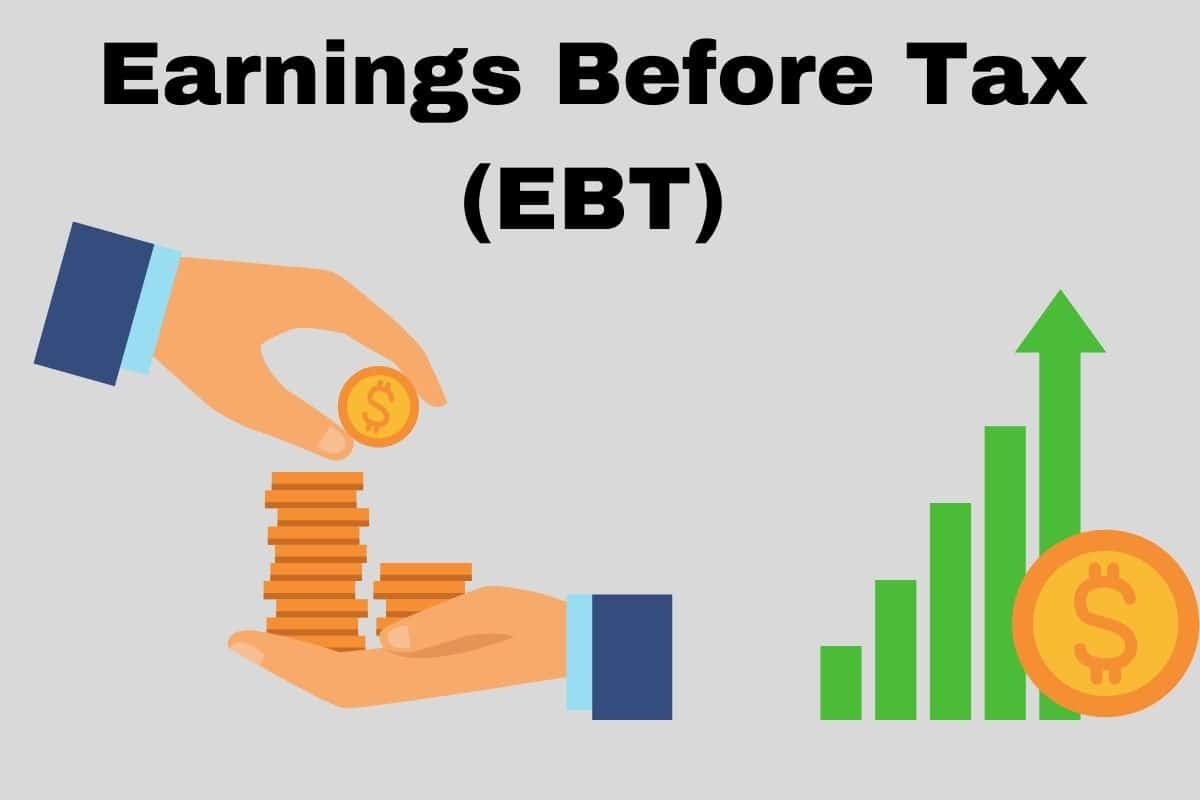From cutting-edge startups to global giants, all companies must keep an eye on their profitability. If you don’t, your cash flow may run out and your business may run into trouble.
There is a wide range of metrics that are used to measure profitability, but earnings before interest and taxes are probably the most common. In this article, you will find out everything you need to know about EBT, including calculating earnings before interest and taxes.
What is earnings before tax (EBT)?
Earnings Before Tax (EBT) measures the financial performance of a business. It is a calculation of the earnings of a company before taxes. The calculation is based on income fewer expenses without taxes. EBT is an item on a company’s profit and loss account. Shows a company’s profit with the cost of goods sold (COGS), interest, depreciation, general administrative expenses, and other operating expenses deducted from gross sales.
How to get earnings before taxes
Finding out your company’s pre-tax income is pretty easy. Net income before taxes begins with your income for the reporting period, regardless of whether it is a month, a quarter, or a year. Then subtract business expenses that are not taxes. This gives you your company’s EBT or earnings before taxes.
Net income
Gross income is defined as the money you earn during a reporting period. The definition of net income is the amount of money you earn after expenses are deducted. If you don’t run your business for cash, income and expenses include money you owe, not just what you pay or get paid.
For example, let’s say you received $ 240,000 this month but completed jobs worth an additional $ 60,000. His gross monthly income is $ 300,000. If you write $ 30,000 in checks to vendors and you have another $ 10,000 in unpaid bills, your expense will be $ 40,000. The net income formula says your net is $ 260,000.
Income tax expenses
Calculating income tax expense is much easier than calculating income before taxes. An experienced accountant knows many ways to reduce a business tax, sometimes to the point of accomplishing nothing. A common practice in preparing income statements is to use historical data.
For example, suppose your EBT is $ 875,000. Your tax expense should be roughly the same as the last time you had this amount of net income unless something material like the tax law has changed. Declares the expected tax burden as an item in the income statement.
The Income Statement
The income statement calculates your net income for the reporting period based on the net income formula. There are two main approaches: single pass and multiple passes. The difference is how they treat profits and losses that are not part of their regular business.
Single or multiple steps?
For a single-level income statement, add up all your income and earnings, and then add your expenses and losses. Subtract the negative from the positive and you get your net income. The last line above the entry for your tax expense gives you your income before taxes.
A multi-level profit and loss account is more complex:
- First, subtract the cost of goods sold from your sales income to get the gross profit.
- Then subtract operating expenses like office supplies and advertising and sales commissions to maintain your bottom line.
- The next section lists non-operating income and expenses, p. Eg B. Investment earnings, interest expense, and litigation losses. When you separate them, you can more easily see how much revenue your operation, the core of your business, has.
- Add the sum of the operating and non-operating income to obtain the net income for the period.
- By simply finishing your calculations before including income tax expense, you will get your net income before taxes.
Profit Before Tax Formula
There are three formulas that can be used to calculate Earnings Before Tax (EBT):
EBT = Sales Revenue – COGS – SG&A – Depreciation and Amortization
EBT = EBIT – Interest Expense
and, EBT = Net Income + Taxes
EBT vs EBIT vs EBITDA
In the world of financial analysis, EBT, EBIT, and EBITDA are often referred to. It’s important to understand the difference between the three metrics, as well as when and why you would consider each of them.
The profit before tax is used to analyze the profitability of a company without the impact of its tax system. This makes companies from different states or countries more comparable, as tax rates can differ significantly across borders. Analysts often prefer to add taxes to net income so that they can compare the apple-to-apple earnings performance of a wide range of companies.
Earnings Before Taxes, Interest and Depreciation
Earnings before interest and taxes (EBIT) are also popular with analysts because they offer an additional level of comparability, namely increased interest expense. While EBT is normalized for taxes, EBIT is normalized for both taxes and interest expense. This means that the capital structure of the company does not affect the evaluation of its profitability.
Earnings Before Interest, Taxes, Depreciation and Amortization
Earnings before interest, taxes, depreciation and amortization (EBITDA) have the most additions and are therefore the furthest from the net result of the three key figures. EBITDA also adds depreciation as it is not a cash expense and therefore has no impact on a company’s cash flow. For more information on EBITDA and cash flow, check out our Ultimate Cash Flow Guide.
EBIT versus EBITDA
There are numerous metrics that you can use to analyze the profitability of a business. Besides EBIT, EBITDA (earnings before interest, taxes, depreciation, and amortization) is another widely used formula. In addition to interest and taxes, depreciation and amortization are removed from the EBITDA equation. This helps companies get a better idea of the profitability of their operating performance.
When calculating the profitability of companies, EBIT and EBITDA often show completely different results. This is because depreciation can make a significant contribution to a company’s bottom line. Since depreciation is not reported in EBITDA, it can lead to a skewed understanding of profitability for companies with a large number of property, plant, and equipment (as these companies are likely to have significant depreciation costs).
Why EBIT is Important to your company
EBIT gives you a measure of the operating profitability of your company. Since costs associated with taxes and interest are not taken into account, EBIT ignores variables such as capital structure and tax burden. There are a few key areas where EBIT is particularly useful:
- Taxes – This is especially helpful for investors comparing different companies with different tax obligations. For example, a company that recently received a tax exemption appears to be more profitable than one that did not. However, this may not be the case. Measuring earnings before interest and taxes can help clarify the situation.
- Debt – EBIT can be very useful when analyzing companies in capital-intensive industries. These types of businesses can have numerous properties, plants, and equipment (usually financed with debt), which means that they have high-interest expenses. However, since these fixed assets are important for long-term growth, it helps to have a profitability measure that eliminates debt and the costs associated with it.
EBT as a comparison tool
EBT is crucial as it eliminates the impact of taxes when comparing companies. While American businesses face the same tax rates at the federal level, they face different tax rates at the state level. Because companies in different states may pay different tax rates, EBT allows investors to compare the profitability of similar companies in different tax jurisdictions. EBT is used to calculate key performance indicators.
We Also Recommend:
- FINANCE: Definition, Types, Importance
- Invoice Discounting: Explained!! (+ Quick tools & all you need)
- CASH FLOW: All you need to know, Simplified!!! (+ Free format)
- Financial Performance: A Comprehensive Guide For Any Business(+ quick tools)
- FINANCIAL REPORTING: All you need to know with Examples (+ quick easy tools)
- INCOME BOND: Definition and Detailed explanation
- BUSINESS EXIT STRATEGY: Things You Should Know
- FINANICAL STATEMENT OF A COMPANY: BEST SAMPLES AND TEMPLATES TO LEARN FROM






